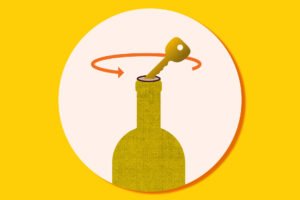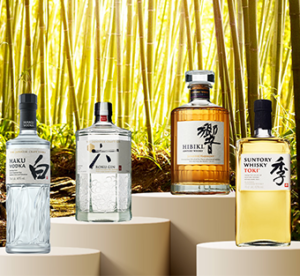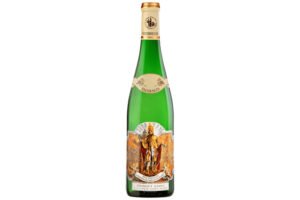Exploring the Best Investment Wines in 2021
[ad_1]

Familiarizing yourself with the best investment wines in 2021 can help you make an informed decision on which vintages to add to your portfolio this year.
Investing in fine wine is much like enjoying it—the more knowledge you bring to the table, the richer the experience. When exploring fine wine investments, be sure to consider the wine’s context—its terroir and its producers—before making your investment decision. Additionally, by taking a closer look at specific wines projected to be strong investments in the coming year, you can discover a few relatively low-risk, and potentially high-reward wines to add to your portfolio.
To that end, this guide will cover not only what factors investors should note when considering a wine investment, but also which wines look like the best investment wines in 2021.
Factors to Consider When Choosing Investment Wines
What makes a wine investment-worthy? While a fully reliable and objective means of measuring the worthiness of a wine as an investment simply does not exist, there are factors that can be researched in advance to help you gauge a wine’s potential.
Origin
In what region does the wine originate? What terroir? The popularity of the region of origin can serve to amplify the popularity of the wine itself. Wines from Champagne and Bordeaux, for example, tend to perform reliably well on the secondary market.
The quality of the terroir in which a wine has its roots, meanwhile, will directly impact the quality (and value) of the wine. A wine from a premier or grand cru in Burgundy, for example, will always perform better than a non-cru Burgundy. This is partly due to scarcity—the smaller-sized plots yield fewer grapes. The terroir, however, is also key here, as these vineyards have an established reputation for yielding some of the best grapes and wines on the market, thanks to the unique environmental conditions that enhance the quality of their crops.
Producer
It’s not unheard of for emerging vintners to gain traction quickly with a standout debut wine. However, wines produced by well-known winemakers are more likely to perform well simply because more people recognize and revere them. A lesser vintage from a first-growth château, for example, will almost always do better than a wine of the same quality from a lesser-known winery. And, of course, a wine from a producer with a consistent history of crafting quality wines will represent a safer investment than one from a less reliable vintner.
Vintage
The vintage year of a wine is a critical consideration when investing. A wine from a good vintage year is more likely to be high-quality—and in higher demand—than an off-vintage option. Likewise, the wine’s age at the time of purchase will determine how long you may need to store it before reselling. Weighing the cost of long-term storage against a wine’s potential ROI is key to determining whether it will be a worthwhile investment. Additionally, vintages that receive high ratings from respected reviewers will always enjoy greater appreciation than vintages that receive little, or poor, attention from professional connoisseurs.
There is also the possibility of a unicorn—an exceptional wine from an otherwise poor vintage year. These can perform especially well due to a potent combination of scarcity and desirability.
Provenance
All of your initial research and due diligence will come to naught if the specific bottle or case you invest in is flawed or damaged. The closer to perfect the provenance of your wine is, the more willing buyers will be to pay top-dollar for it.
Before you invest, be sure to obtain proof of authenticity, as well as any other certificates that will help put any potential concerns to rest. The first benefit of this, of course, will be to prevent short-term losses incurred by overpaying for an ultimately worthless forgery you won’t be able to resell. It’s also vital, however, to preserving your reputation on the secondary market. Attempting to sell a false or damaged wine, unwittingly or not, can have massive, lasting repercussions.
Another smart move will be to buy winery-direct wines when possible. Because these ex-château wines are shipped directly from the producer to you, they cover less ground and cross fewer hands—meaning these wines will be best-protected from anything that could damage their provenance. Once they arrive, be sure to store your investment wines in a reputable storage facility to maintain that perfect provenance until the day they sell.
Keeping these considerations in mind can help you make smart investment choices, no matter what wine you’re looking to add to your portfolio. Now, let’s take a closer look at which wines might prove to be the best investment wines in 2021.
The Best Investment Wines for 2021
Below is a list of the investment wines currently performing the best [link to best performing investments] on the secondary market, as reported by Liv-Ex. Each entry notes the wine’s vintage year, producer, and origin to help inform your decision of whether to add any of these illustrious options to your personal portfolio. Ratings from a variety of professional reviewers have been included as well, to give a clearer indication of the quality of each individual wine.
| Wine | Description | Rating |
| 2010 Château L’Eglise Clinet | This red Bordeaux blend is sourced from the Pomerol AOC in southeastern France, a well-respected appellation known for quality as well as nonconformity. Château L’Eglise Clinet has a long history of producing great Bordeaux wines, dating all the way back to 1803. | 98, James Suckling |
| 2013 Tenuta San Guido Sassicaia | A regional blend of Cabernet Sauvignon, Cabernet Franc, and Merlot from one of the most widely respected appellations not just in Italy but in the world—Tuscany. San Guido likewise enjoys quite the reputation as one of the pioneers of the “Super Tuscan” sensation. The vineyard itself traces its roots back to a particularly well-known First-Growth château—the first vines planted here were cuttings from Château Lafite-Rothschild. | 97, Wine Advocate |
| 2008 Bollinger, La Grande Année | Located in the heart of the Champagne region of northern France, the Bollinger winery is known worldwide for the quality of its Pinot Noir-based blends. That fictional master spy James Bond favors it (Bollinger Champagne appears in several of the franchise’s films and novels) only seems to add to its allure. | 99, Jeb Dunnuck |
| 2009 Château La Conseillante | Another red Bordeaux wine from Pomerol, this blend of Merlot and Cabernet Franc hails from Château La Conseillante, a château with a history of excellent winemaking that dates back to the 1700s. | 97, James Suckling |
| 2013 Marchesi Antinori Solaia | Praised as one of the best Solaia vintages of all time by Wine Advocate, this blend of Cabernet Sauvignon, Sangiovese, and Cabernet Franc is yet another showstopping Super Tuscan. Perhaps this is no surprise, however, given that Marchesi Antinori has been one of Tuscany’s most influential wineries since its founding in 1385. | 97, Wine Advocate |
| 2008 Vega Sicilia Alión Ribera del Duero | Tempranillo has enjoyed a widespread reputation for excellence since its triumph at the 1917 and 1918 World’s Fairs in Barcelona—and it all started at the Vega Sicilia estate in Ribera del Duero more than a century ago. Today, it is slowly but surely becoming one of the most coveted—and scarcest—wines on the market. | 95, Wine Advocate |
| 2013 Marchesi Antinori Tignanello | Yet another Super Tuscan from the world-renowned Marchesi Antinori winery, this wine is a breathtaking blend of Sangiovese, Cabernet Sauvignon and Cabernet Franc. The vineyard from which the grapes are harvested lies in the heart of the Chianti Classico region, right alongside the Solaia vineyard. | 96, Wine Advocate |
| 2016 Vieux Télégraphe, Châteauneuf-Du-Pape La Crau Red | The Châteauneuf-Du-Pape subregion of the Southern Rhône carries the distinction of being the first of the French wine appellations, established back in 1936. Many also consider it France’s best appellation—and see Domaine du Vieux Télégraphe as one of the top producers of the region. The 2016 vintage, in particular, is one of the best-performing in recent history. | 98, James Suckling |
| 2006 Dom Pérignon | Another Champagne classic, Dom Pérignon is a household name among connoisseurs and casual collectors alike. Dedicated to quality above all else, the Moët & Chandon winery is known for only releasing vintages that meet high-quality standards. Dom Pérignon is never made from subpar harvests—making it one of the most reliable investment wines on the market. | 97, James Suckling |
| 2016 Marchesi Antinori Tignanello | Yes, another Super Tuscan—and another Tignanello from master vintner Marchesi Antinori. The 2016 vintage is right up there with 2013 in terms of quality, thanks to a warm, moderate growing season that promoted even ripening of the grapes. | 97, Wine Advocate |
Any one of these top-performing wines would make an excellent addition to your portfolio in 2021, with many expected to continue to appreciate significantly through and perhaps even beyond their peak drinking windows.
Protecting Your Wine Investment
Whether you plan to invest in one or more of 2021’s best investment wines this year, remember the cardinal rules of protecting your fine wine investment:
- Ship smart. Unless you are purchasing your wine in person, be sure that the company shipping your wine can be relied upon to take the utmost care when handling your investment. Shipping under bond provides the highest level of protection.
- Store well. Regardless of how long you plan to cellar your wine before reselling it, protecting its provenance throughout the duration of your ownership is critical. The finest wine in the world won’t turn much of a profit if it is damaged before finding its rightful home. For this reason, opting for professional storage is strongly recommended.
- Maintain a paper trail. While a perfectly preserved wine may sell well even without the paperwork to prove it, being able to provide hard evidence of how well your wine has been cared for will help it sell more quickly—and for a higher profit.
As any astute investor already knows, quality is king when it comes to buying and selling wine on the secondary market. The more valuable your wine is, the more you should value it—both in theory and in practice.
Whether you are starting your high-end wine collection or adding to an established portfolio, Vinfolio is your partner in buying, selling, and professional storage. Contact us today to get access to the world’s finest wine.
[ad_2]




